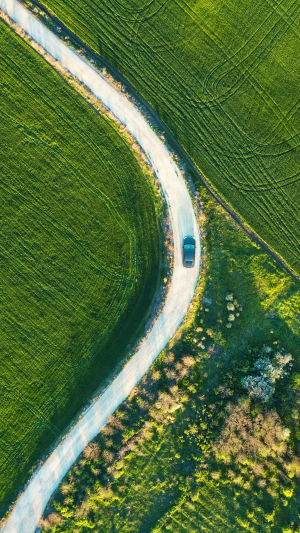As urbanization intensifies, the fast-paced life of the city brings strong pressure to the hearts of urban dwellers, and the need for people to get closer to nature grows stronger, themed farm tourism provides a happy place for urban dwellers to get away from the hustle and bustle of the city.
In recent years, the "agriculture + tourism" model has emerged across the world, but not many farms have really formed a brand.
In the 1950s and 1960s, European countries began to study rural landscape planning and design, and countries such as the Czech Republic, Germany, and the Netherlands have established comprehensive rural landscape planning and design concepts and theoretical systems.
In the Netherlands, rural settlement landscape planning is often closely related to the land adjustment process after scientific and systematic research, and its development trajectory has changed from serving economic factors such as agricultural production to focusing on effective land resource use combined with landscape quality, ecological protection, and development.
Related to this are the Italian mountain towns of Alberobello, Solvas in Spain, and Mykonos in Greece, which are famous ancient towns that have revitalized their traditional rural landscapes by maintaining their original local flavor in landscape planning.
Germany pays more attention to "village renewal" planning while protecting and rationalising resources, promoting intensive agriculture and nature conservation planning, and respecting ecology.
German landscape design is full of romanticism, and many designs are artificial reshaping of natural landscapes, such as the modern restoration of old rural landscapes, ecological transformation of modern rural landscapes, and thematic public building projects designed to return to natural planning.
Such as the use of a variety of media in the planning process as a means of transformation, solar energy use, rainwater use and recycling systems, and other ecological technology, and in the design The design and planning of the area include humanistic elements.
Such as typical flats for the elderly, unique roof gardens, cemeteries with beautiful surroundings, rubbish dumps, and private gardens.
In the USA, the concept of integrating two elements to enhance value is particularly important in rural planning.
Two elements are essential: the ecological value of the landscape and the cultural value of the landscape.
In 1936, for example, Forman proposed multiple models of rural landscape planning based on the ecological space theory, which in its application provided a practical opportunity for the development of rural tourism planning and helped to protect the natural and ecological environment of the countryside.
In northeastern New Jersey, USA, Peter, and James surveyed a sample of landowners' attitudes towards protecting rural landscape space and found that landowners in urban areas did not attach much importance to it, while landowners in rural areas had a very positive attitude towards protecting rural landscapes.
The focus of European multifunctional and urban agriculture is on multifunctional idyllic landscapes, which include not only production functions but also environmental protection and cultural education, water conservation, biodiversity protection, and ecosystem service provision.
Since the 1990s, the European Union has been implementing plans to develop agroecological protection and has been an early adopter of ecological compensation policies, promoting the implementation of ecological engineering measures to restore and enhance biodiversity and its ecosystem services, and creating multifunctional idyllic ecological landscapes.





